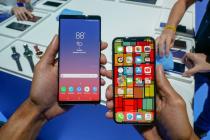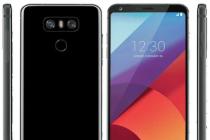Today, a smartphone is the main source of information, with which you can also take photos and videos of excellent quality. At the same time, file sizes and their number are growing every day: photos in JPG and RAW, videos in Full HD and 4K resolution, music in mp3 and lossless formats... All this requires memory, which may not be enough on the internal drive.
Did you know that a microSD memory card is not just a small flash drive, but a serious tool that expands the capabilities of a smartphone? And most importantly - cards differ not only in volume, but also in speed class and reliability.
In this article, you will learn how to choose a microSD memory card for your smartphone.
Why does a smartphone need a memory card?
Many modern smartphones are equipped with microSD card slots. This is necessary to expand the memory: you can upload video files, photos and music to it, as well as install some applications. The latter has become a serious problem for many smartphone manufacturers, because users choose cards that do not support the desired speed. In Android 5.0 Lollipop, Google returned the ability to install applications not in the smartphone's memory (which is always lacking), but on microSD.
Moreover, in Android 6.0 Marshmallow on a number of devices, a microSD memory card is installed as an internal drive: the memory of a smartphone and a flash drive are combined into one “disk”. For example, buy a device with 16 GB on board and expand the memory up to at least 200 GB. Really, great? To do this, you need to choose the type and speed of the card correctly. What is a proper memory card?
microSD memory cards
The dimensions of such a card are 15 by 11 mm (it can be compared with a nanoSIM card), and the volume reaches 200 GB. MicroSD memory cards can be roughly divided into three types:
- conventional microSD: their capacity does not exceed 4 GB;
- microSDHC (High Compatible): high-capacity memory cards (up to 32 GB);
- microSDXC (Extra Compatible): Extra high capacity cards (greater than 32 GB).
A 200 GB SanDisk Ultra Plus microSDXC memory card is now on sale.

What is important for a smartphone owner to know about these types of cards? Smartphone slots are not backwards compatible. And if the device only supports microSD, then microSDHC will not work in it. It is important to pay attention to how much additional memory the smartphone supports. Most modern flagships are compatible with microSDXC. Most often, in the technical specifications you can find information that the device supports memory cards up to 128 or 200 GB, less often - 2 TB of memory on microSD. There are no maps of such a volume yet, but with a high probability this height will be taken in the near future.
Memory card capacity
There are cards of almost any size: from 8 to 200 GB. It is difficult to find cards up to 8 GB in size, since they are not in demand, especially since a 16 GB card costs about 300 rubles.
In terms of memory capacity, we can only give one piece of advice. If you are going to record video in 4K resolution, listen to lossless music and shoot photos in RAW, it is better to purchase a memory card with a capacity of at least 64 GB.
It is better not to save on volume, but at the same time, it is necessary to clarify in the characteristics of the smartphone what maximum volume is supported by your model.
Recording speed
In fact, this is the main indicator in modern flash drives. Often it is ignored, paying attention only to the volume of the carrier. Despite the small size of the microSD, you can find a lot of valuable information on the card itself: type (microSD, microSDHC or microSDXC), capacity and speed class. Let's learn to read these notations.
On ordinary maps, speed is indicated by a number that is inscribed in the Latin letter C: 2, 4, 6 and 10 (these are standard speed classes). In fact, they show how many megabytes can be written to a memory card in one second. In the case of Class 10, the speed can be higher than 10 MB / s. It is important to note that today most classes with the letter C are already outdated, and even Class 10 sometimes does not allow you to work comfortably if the actual speed is less than 30-40 MB / s. Usually, the manufacturer additionally indicates the exact write speed in megabytes per second directly on the memory card - that's what you should be guided by.
There are also microSD cards with increased write speeds. This standard is called UHS (Ultra High Speed). It is indicated by the speed class number inscribed inside the Latin letter U.

In the case of this type, we mean the minimum write speed: UHS Speed Class 1 - from 10 to 104 MB/s, UHS Speed Class 3 - from 30 to 312 MB/s.
But here it is very important not to get confused. Along with UHS, there is a similar designation of card types: UHS-I and UHS-II.

Outwardly, UHS-II is very easy to distinguish: there are two rows of contacts on the reverse side. This is a new format that provides even greater data transfer speed. Note also that so far none of the smartphones support UHS-II. These cards are backwards compatible and will work in all modern devices like UHS-I.
How can a card become the internal memory of a smartphone?
When talking about speed, it is important to note the possibility of using a memory card as an internal drive on smartphones running Android 6.0 Marshmallow. To do this, select UHS Speed Class 1 (U1) or UHC Speed Class 3 (U3). The U1 speed class (using SanDisk products as an example) is supported by Ultra Plus series memory cards, and U3 cards are distinguished by the Extreme label (Extreme, Extreme Plus and the fastest of all Extreme Pro). At SanDisk, the division into series is the most convenient and understandable. Other companies may have nothing on the card other than volume, speed class, and card type. There may be a custom designation to highlight a particular speed in a separate class.
But the most important thing is that not all devices support this feature. It is closed at the software level in the new flagships of Samsung and LG, as well as in Sony Xperia smartphones, which recently received an update to Android 6.0 Marshmallow. At the time of writing, we know about the support of this option in Moto devices, as well as HTC. So be sure to study the characteristics of your model!
Reliability
Small memory cards are at risk. First, they can be lost. Secondly, they can fall into the water, onto the asphalt, be in the cold or heat. If the former is almost unavoidable due to size, then most of the other possible problems the cards can be protected against. It is not uncommon for manufacturers to mention the degree of card protection on the packaging or in specifications. The card can be waterproof, impact resistant or X-ray resistant. SanDisk guarantees this protection.
Different purposes - different memory cards
SanDisk recently celebrated the release of its 2 billionth microSD card. The company has a huge number of solutions for every taste. And now we will focus on the most interesting products in this class.


If you need super speed, you are going to shoot photos and videos in huge volumes and the highest resolutions up to 4K, try using a memory card as an internal drive, then Extreme PRO microSDXC UHS-II is for you. This is the fastest card to date. True, not a single smartphone yet supports its type (UHS-II). This means that it will not reach its maximum speed, but it will still remain the fastest card. Extreme PRO microSDXC UHS-II is available in two sizes: 64GB or 128GB, with speed class U3. This drive features the world's fastest transfer speeds of up to 275MB/s. A dedicated USB 3.0 adapter is included. The card is also shock and water resistant, operates over a wide temperature range, and is X-ray resistant. Whatever happens, the files on this memory card will remain safe and sound.



Extreme Plus microSDHC / microSDXC UHS-I is suitable for formatting as an internal drive, recording 4K video, storing and transferring "heavy" files. Available in 16GB, 32GB, and 64GB that support UHS Speed Class 3 (U3): write speeds up to 90MB/s, read speeds up to 95MB/s.


Another high-speed solution that is suitable for working with video in 4K resolution, large files and for use as an internal drive is Extreme microSDHC / microSDXC UHS-I (16, 32 or 64 GB). What is the difference? The read speed is also fast (90 MB/s), but the write speed is noticeably slower (40 MB/s), so we recommend using it for file storage and camera shooting. If you format the card as internal storage, applications may still run slower. So the last one is up to you. However, this value is sufficient for 4K video. Speed class - C10 and U3. It seems to be the best solution for a flagship smartphone today in terms of speed and sufficient storage space.




If you consider 4K in a smartphone to be nothing more than pampering, and you will record Full HD, work with images and store data, then Ultra Plus microSDHC/microSDXC UHS-I will suit you. It is interesting and important that these memory cards come in sizes from 16 to 128 GB. Speed classes - C10 and U1, data reading speed reaches 48 MB / s. They are protected from water, shock and X-rays, as well as from temperature extremes.

A record-breaking card that allows you to record Full HD video, work with large files and can be used as an internal smartphone drive - Ultra microSDHC / microSDXC UHS-I with a capacity of 200 GB. The perfect choice for photographers and vloggers! Its main feature is, of course, a record amount of memory. Speed class 10 (C10). At the same time, the read speed can reach 90 MB / s, the write speed is lower.
Summary
Of course, it is important to decide on the amount of memory, because today there are solutions from 4 and 8 to 128 GB, as well as space 200 GB. But the main thing when choosing a memory card is to pay attention to speed classes. These small icons stand for a reason: they indicate the microSD speed and its scope.
Also, do not forget about reliability. If you have a choice, it is better to give preference to a memory card with protection against water ingress, shock, X-rays and temperature extremes.














